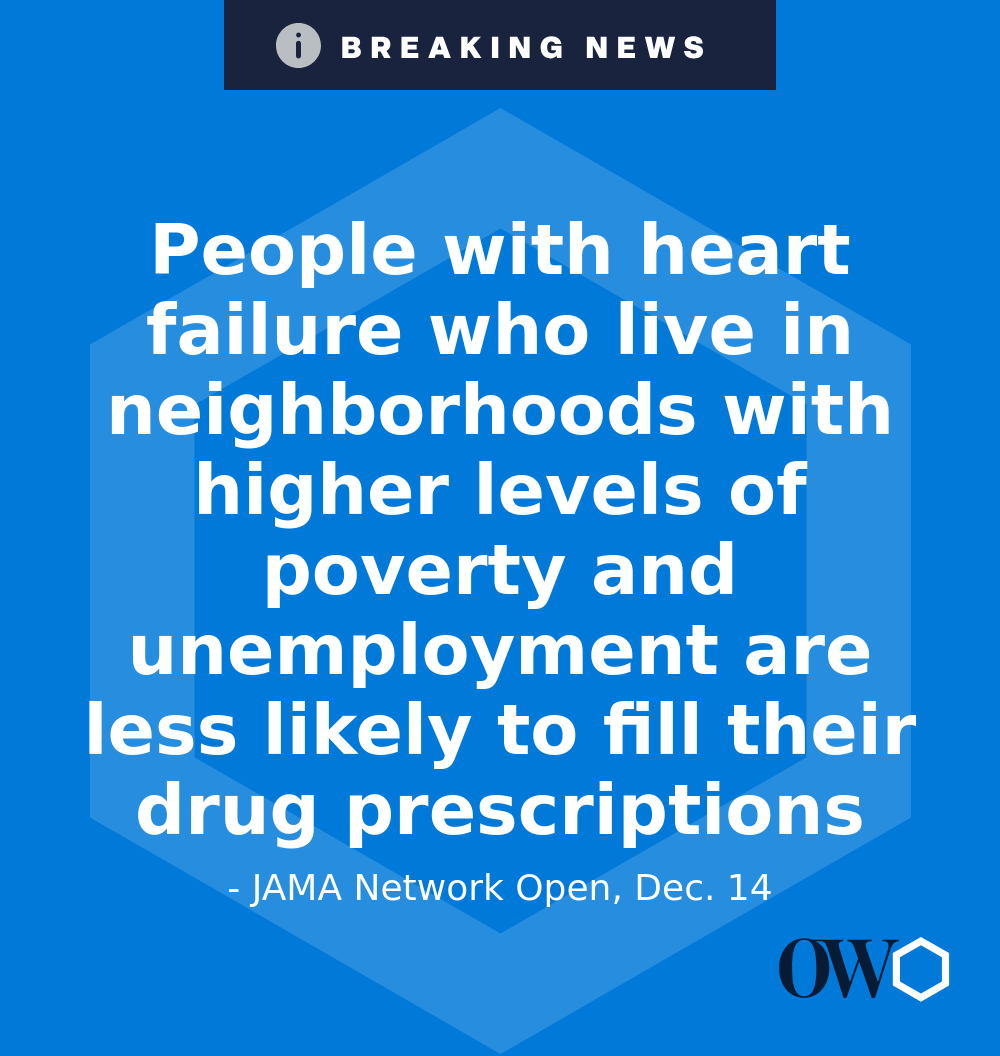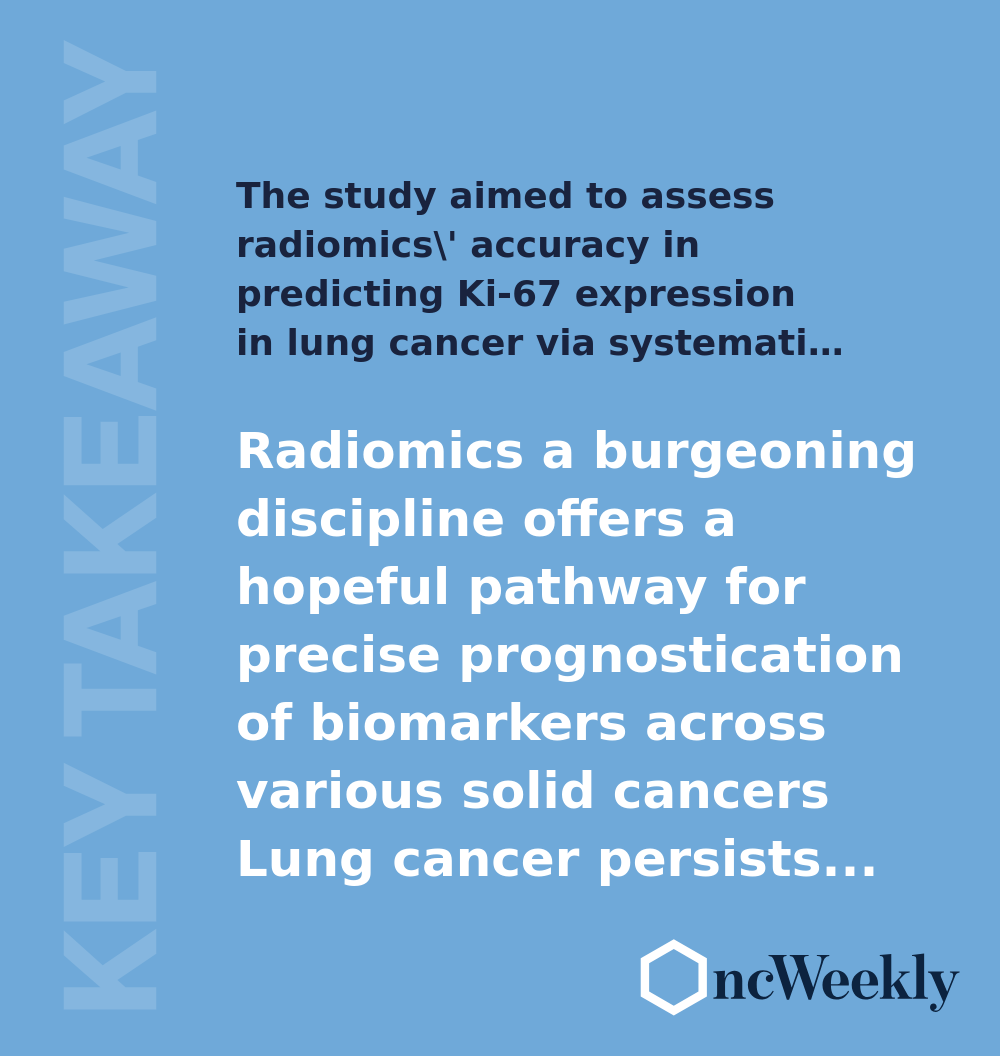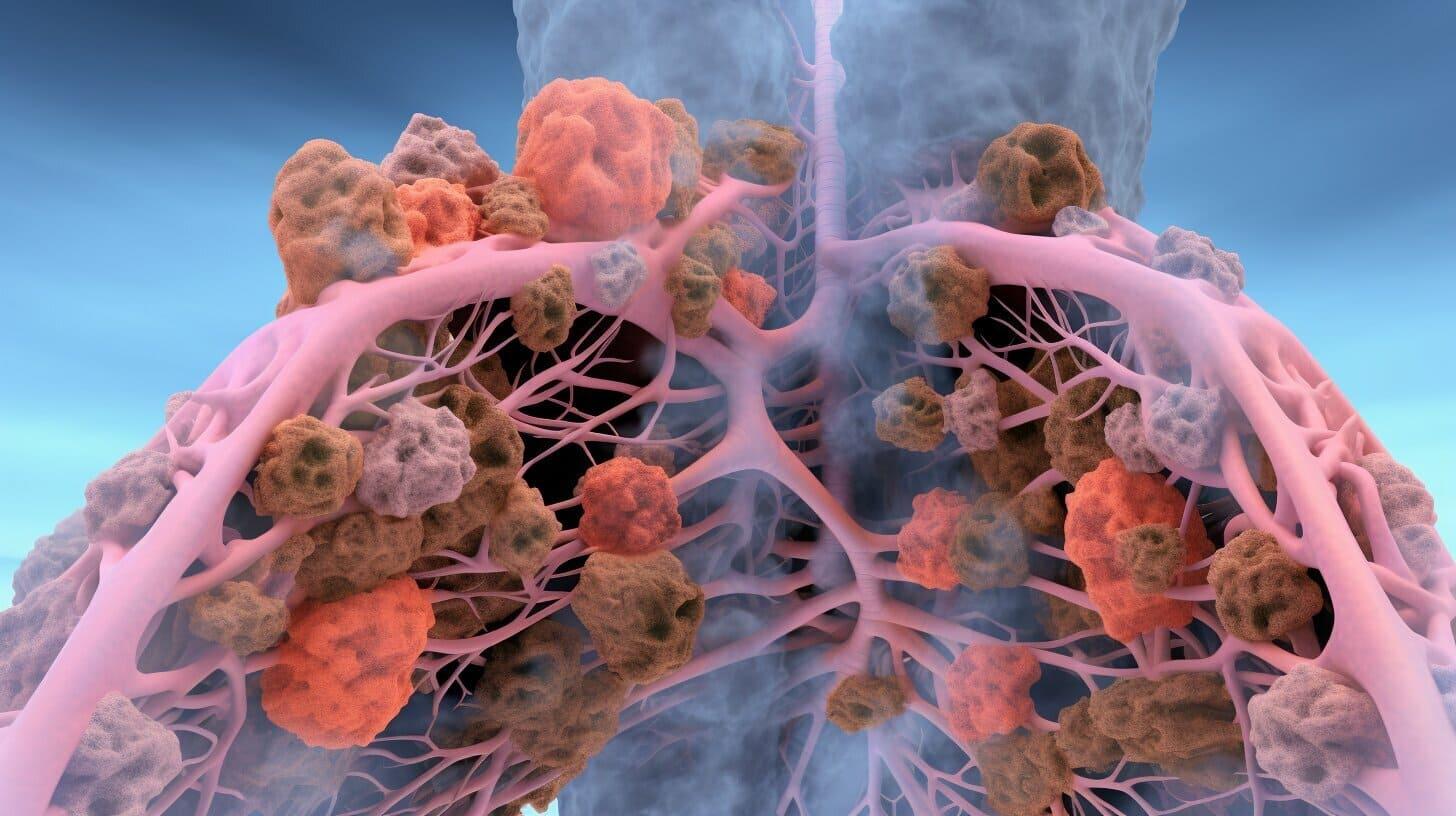KEY TAKEAWAYS
- The study aimed to assess radiomics’ accuracy in predicting Ki-67 expression in lung cancer via systematic review and meta-analysis.
- CT radiomics showed potential for predicting Ki-67 in lung cancer, urging enhanced accuracy research for less invasive diagnostic integration.
Radiomics, a burgeoning discipline, offers a hopeful pathway for precise prognostication of biomarkers across various solid cancers. Lung cancer persists as a prominent worldwide health concern, significantly impacting cancer fatality rates. Precise evaluation of Ki-67, a marker indicative of cellular proliferation, holds paramount importance in gauging tumor aggressiveness and treatment efficacy, notably in non-small cell lung cancer (NSCLC).
Xinmin Luo and the team aimed to identify radiomics studies predicting Ki-67 expression in lung cancer, while assessing their quality through QUADAS-2 and RQS tools.
The study employed systematic review and meta-analysis methodologies, adhering to PRISMA-DTA guidelines. Two authors independently conducted literature searches until September 23, 2023, across PubMed, Embase, and Web of Science databases. The objective was to identify radiomics studies predicting Ki-67 expression in lung cancer. Quality assessment utilized both QUADAS-2 and RQS tools. Statistical analysis, conducted with STATA 14.2, including evaluation of sensitivity, specificity, heterogeneity, and diagnostic values.
About 10 retrospective studies revealed promising diagnostic performance of computed tomography (CT) scan-based radiomics in predicting Ki-67 expression in lung cancer. In the training cohorts, pooled sensitivity, specificity, and area under the curve (AUC) were 0.78, 0.81, and 0.85, respectively. In validation cohorts, these values were 0.78, 0.70, and 0.81. Quality assessment using QUADAS-2 and RQS indicated generally acceptable study quality. Heterogeneity in training cohorts, attributed to factors such as contrast-enhanced CT scans and specific Ki-67 thresholds, was noted. Notably, publication bias was detected in the training cohort, suggesting a tendency for positive results to be published over non-significant or negative results. Hence, there’s an encouragement for journals to publish negative findings also.
The study found that CT-based radiomics showed potential for predicting Ki-67 expression in lung cancer. While the findings indicate promise for clinical application, further research should focus on improving diagnostic precision. This may lead to the integration of radiomics approaches as a less invasive option compared to current methods such as biopsy and surgery for assessing Ki-67 expression. The funding for this study was provided by the Scientific Research Project of Sichuan Provincial Primary Health Development Research Center (No. SWFZ22-C-65).
Source: https://pubmed.ncbi.nlm.nih.gov/38384802/
Luo X, Zheng R, Zhang J, et al. (2024) ‘’CT-based radiomics for predicting Ki-67 expression in lung cancer: a systematic review and meta-analysis.’’ https://doi.org/10.3389/fonc.2024.1329801.













